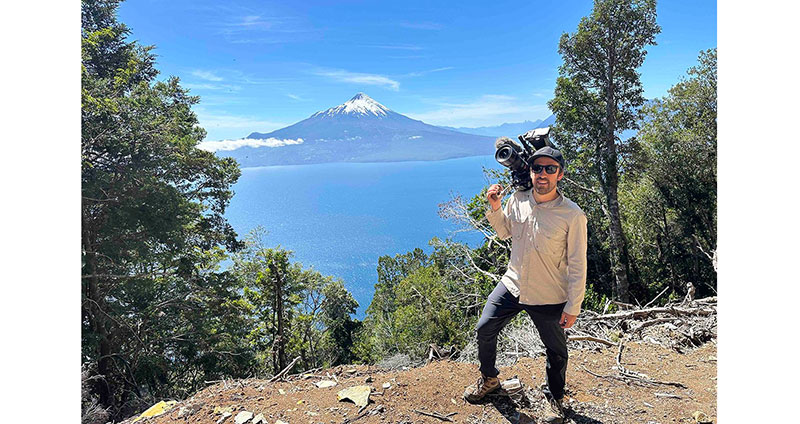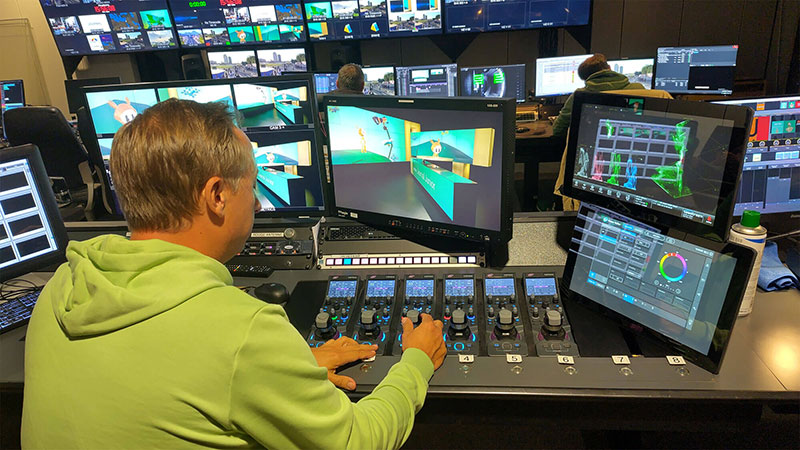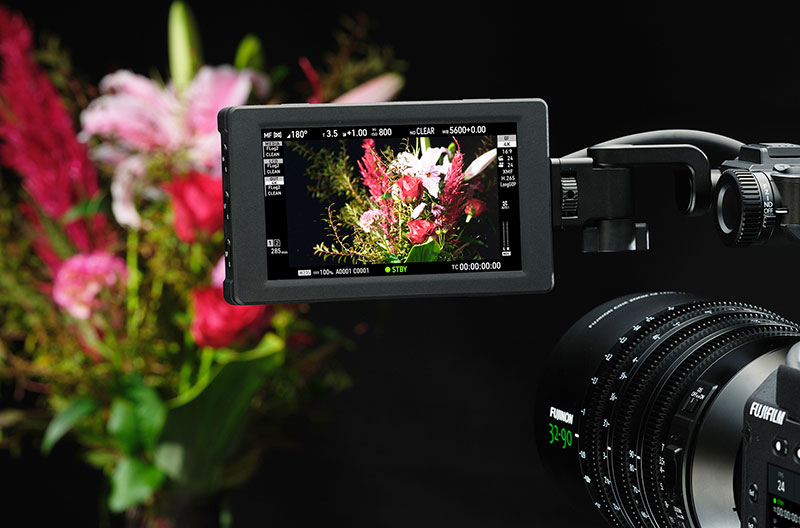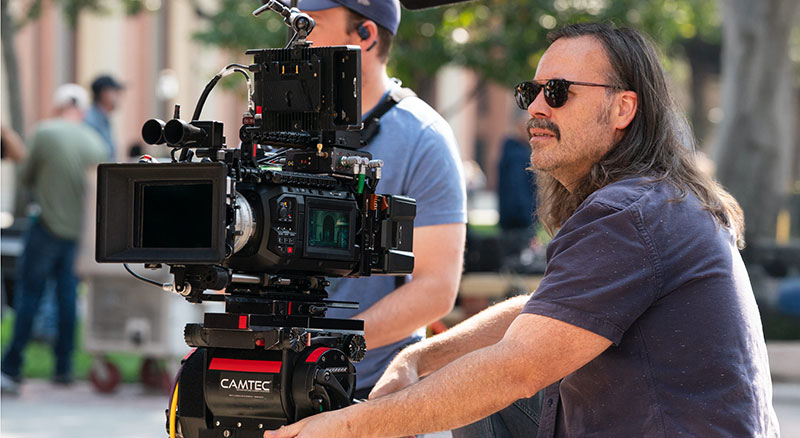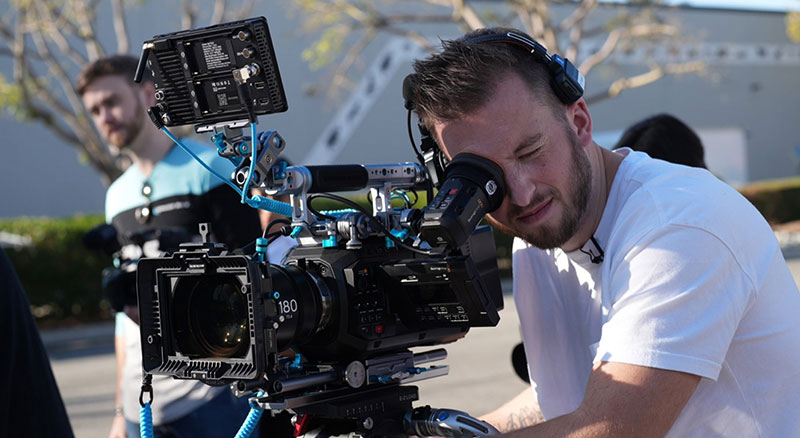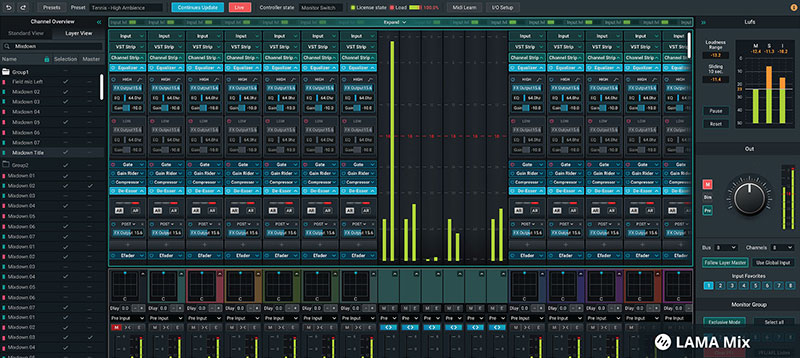Sony’s new FX2 full-frame camera suits independent filmmakers and crewslooking for cinematic production values, with 15+ stops of dynamic range, dual ISO and updated focussing.
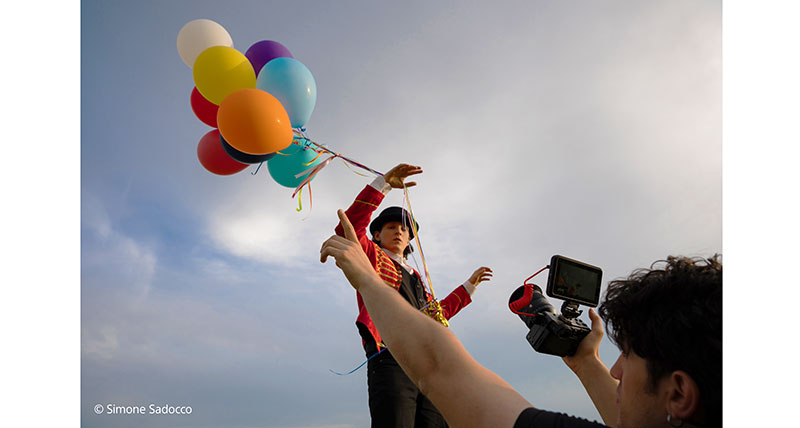
The new Sony ILME-FX2 is a full-frame filmmaking camera designed as an entry model into the company’s Cinema Line for independent creators looking for cinematic production values, and crews needing a versatile camera.
Full-frame Video and Stills Functionality
The FX2 has a full frame 33.0 effective megapixel back-illuminated Exmor R sensor capturing using S-Log3 images with up to 15+ stops of dynamic range, allowing users wide exposure latitude within that range. This combination of specifications records ample detail in both the highlights and shadows. Distinctive bokeh effects are also achievable, like many of the other Cinema Line cameras.
The back-illuminated sensor keeps the digital matrix and its wiring on the back of the silicon sensor surface, preventing it from blocking light as it enters the aperture. The silicon itself is also thinner. This arrangement allows more light to reach the sensor’s photosensitive layer, and records clearer images.
The camera also has Dual Base ISO settings for S-Log 3 of 800 and 4000, enabling optimal image quality across varied lighting conditions. The FX2 ISO sensitivity for video can be expanded up to 102400, making it ideal for low-light environments. The camera also supports multiple recording formats for flexible post-production workflows. Users can record in 4:2:2 10-bit All-Intra and in formats like XAVC S-I DCI 4K at 24.00p, among others.

The ILME-FX2’s shooting capability can be extended to up to 13 hours of continuous recording in 4K 60p2, due to an internal cooling fan and effective heat dissipation set-up. It has variable frame rate settings, allowing up to 60 fps in 4K for a maximum 2.5x slow-motion effect, and up to 120 fps in Full HD, equivalent to up to 5x slow motion.
Log Shooting Modes and Colour Support
Log shooting in Cine EI (exposure index), Cine EI Quick, and Flexible ISO modes supports varied workflows for different productions. Shooting S-Log 3 on its own is flexible and allows adjustment to the ISO, but the Cine EI mode does not – it sets the camera to a fixed value, usually the camera’s native base ISO, where it gives the best latitude and noise result. In the case of the FX2, there are two native Base ISOs, one for bright and one for low light scenes.
So, the Cine EI mode suits studio environments, where the lighting can be set up to precisely match requirements. When working in Cine EI mode, you can intentionally underexpose or overexpose your image, compensate by lowering or raising the EI setting, and then check the result using a monitor LUT. (Cine EI Quick just means that the Base ISO switches automatically according to the adjusted EI value.)
In post-production, both the Cine EI metadata and the LUT metadata are applied automatically to the video, so that it looks as it did on set, but the advantage is a wider dynamic range to work with, and the least noise achievable for the sensor.
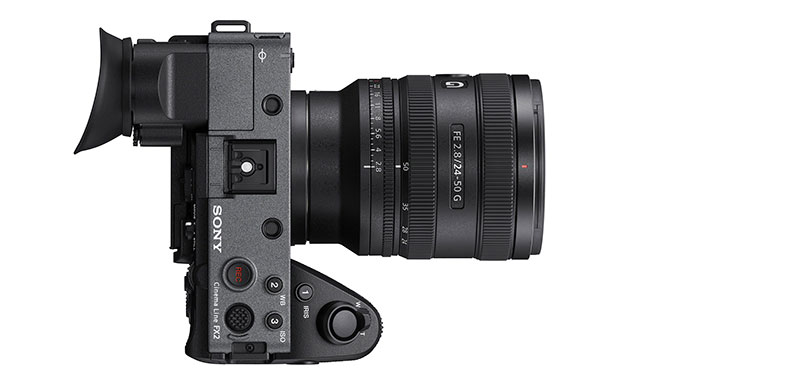
For precise colour monitoring on set, users can import up to 16 of their own LUTs for on-camera previews. You can also create in-camera cinematic looks by setting S-Cinetone as the default, along with a selection of Picture Profile and Creative Look presets. A desqueeze display function is available, supporting both 1.3x and 2.0x anamorphic lenses for accurate framing.
Stills Photography
The camera has a further log shooting option for still image photography, with a new 'Log shooting' menu. This feature allows creators to shoot high-resolution 33MP stills, optimised for colour grading in post. Blackmagic DaVinci Resolve will support the FX2's still RAW format (Sony ARW) before end of 2025.
Commercial and advertising cinematographer Stefan Krenn commented, "The image quality and colour science gave me the look I wanted. Skin tones were clean, dynamic range handled tough lighting well, and the footage was incredibly gradable. It felt like a true cinema tool, but without the usual weight and setup demands".
A MOVIE/STILL mode lever allows the user to quickly switch between still and movie shooting. Depending on the mode selected, the displayed menu items will also change automatically. A long press of the Fn button will also recall and change the shooting mode.
Usability for Single Operators
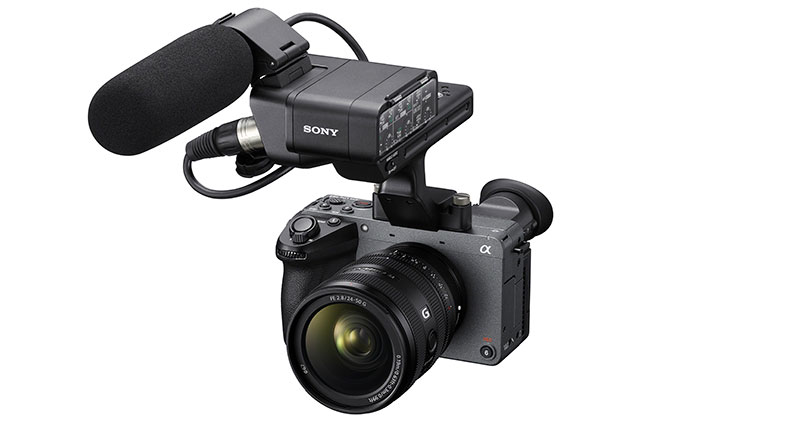
The ILME-FX2 is compact, measuring 129.7 x 77.8 x 103.7 mm and weighing about 679 grams, making it a good choice for solo operators or small crew productions. For compatibility across setups, its flat-top design is similar to the Sony FX3 and FX30 cameras. Built-in mounting points (UNC 1/4-20 x3) are included for users working in cageless configurations and on tripods. An optional top handle is available for control during handheld or fast-moving projects.
The camera’s focus features include Real-time Recognition AF, a type AI processing that improves tracking accuracy for human subjects. Its intelligent subject recognition extends to animals, birds, vehicles and insects, and has an automatic mode as well. For more control and to use focus as a means of expression, the camera includes focus breathing compensation and AF Assist, and the autofocus transition speed and sensitivity can also be customised.
The camera comes with Active Mode and Dynamic Active Mode, new to the Cinema Line. Both modes are designed for steadier handheld shooting. Active Mode increases stabilisation when the user is walking and shooting. When moving at a faster pace, Dynamic Active Mode uses electronic stabilisation makes it possible to shoot stable footage even when running.
Among the stabilisation developments is Auto Framing. During recording, the camera automatically changes the composition by following the recognized subject and cropping the image so that, even if the camera is fixed, adjustments will continue. This feature will keep the subject in a prominent position when the camera is mounted on a tripod, for example. The related Framing Stabilizer function automatically keeps the subject in the same position within the frame, especially useful when the camera operator needs to move alongside the subject.
Tiltable Electronic Viewfinder
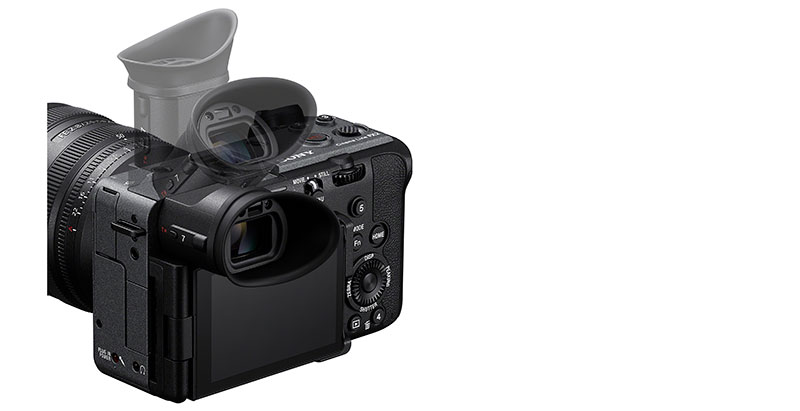
This Cinema Line model has a high-resolution 3.68-million-dot tiltable electronic viewfinder (EVF). Its viewing angle is optimised for video production. It comes bundled with a deep eye piece and includes a variable angle 3.0-type touchscreen LCD to help the user frame shots from any position.
The controls are placed on the top panel and around the grip, with tally lamps to indicate recording status. A ‘home’ screen can be customised to display frequently used parameters such as FPS, ISO, shutter speed (angle/speed), Look presets, white balance, iris or ND filter status. To shoot content in a vertical 16:9 aspect ratio for social media, the FX2 also displays vertical information while shooting.
Expansion and Connectivity
The camera’s expansion and connectivity options include an HDMI Type-A terminal capable of outputting up to 4K 60p 4:2:2 10-bit video and 16-bit RAW for high quality recording and monitoring. For data transfer and remote control, it supports dual-band Wi-Fi (2.4 GHz and 5 GHz6) as well as wired LAN via a compatible adapter.
The USB Type-C port can be used for SuperSpeed USB 10Gbps data transfers and supports USB Power Delivery (PD), and built-in USB and network streaming support enables live broadcasting and remote production workflows. Appropriate power supply and cabling are required for these functions.
When incorporating the top handle, the FX2 comes with two XLR/TRS terminals and 3.5 mm stereo (mic) mini jack for professional 4-channel, 24-bit digital audio input.
The ILME-FX2, for the body-only model or with the top handle, will be available from July 2025. pro.sony





